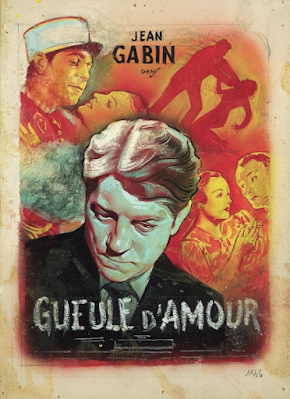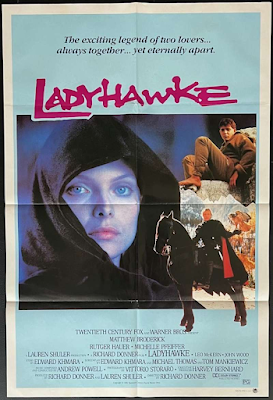Wonderland Burlesque's
Let's All Go To The Movies
She's A Lady!
Part XLVII
Yes, sometimes? It takes a lady.
And sometimes? That lady takes the form of a hawk or a dog!
Or so these films would have us believe.
They promise lots of drama, the occasional comedy or musical, and a little bit of dirt!
Let's take a walk down Hollywood Blvd. and shine a light on these magnificent classic films.
This way, if you please. But remember...
Ladies first!
--- ---
(1923)
Basil Van Bibber, son of a prominent family, and Nora Schultz, daughter of a butcher who invented a sausage machine that made the Van Bibbers rich, pretend to be in love to please their parents; but when Nora tries to protect the young Van Bibber from a charge of reckless driving, they discover that they really are in love.
This silent comedy was directed by Herbert Blaché and stars Gladys Walton, Jerry Gendron, Hank Mann, Kate Price, Otis Harlan, and Florence Drew.
--- ---

The Old Lady
(1932)
AKA: La vecchia signora
An elderly chestnut vendor lives in poverty but once a month puts on a show with silk and a carriage to impress her daughter in a convent. One day she is robbed of her meager savings.
This Italian comedy drama was directed by Amleto Palermi and stars Emma Gramatica, Maurizio D'Ancora and Armando Falconi. It features Vittorio De Sica in his first sound film.
The film's sets were designed by the art director Redo Romagnoli. It was remade as Peppino e la vecchia signora (1954)
--- ---
Lady Killer
(1937)
AKA: Gueule d'amour
(1937)
AKA: Gueule d'amour
Lucien Bourrache, a good looking non-commissioned officer in the Spahis, is used to charming many women. He meets Madeleine Courtois in Cannes. She is beautiful and lives in luxury. He lends her a large amount of money, which she loses gambling. Then she drops him. But Lucien is now in love, and once demobilized, he goes to Paris to find her again. But he's not so sexy without his uniform, and Madeleine and he do not belong to the same milieu.
This French drama was directed by Jean Grémillon and starring Jean Gabin, Mireille Balin and Marguerite Deval.
Classified as both a film noir and an entry into the poetic realist group of films of the late 1930s, this film was produced by the German company UFA in conjunction with its own French subsidiary ACE. It draws on the tradition of German expressionism in its lighting and set design, although the Nazi authorities were opposed to the expressionist style.
It was shot at the Babelsberg Studios in Berlin and on location around Cannes, Orange and Paris. The film's sets were designed by the art directors Hermann Asmus and Max Mellin.
The film was selected for screening as part of the Cannes Classics section at the 2016 Cannes Film Festival.
Good-bye, My Lady
(1956)
Skeeter has found a dog and discovers no one knows what kind it is. He discusses the matter with his uncle, expressing a desire to keep and train the dog for bird hunting, after discovering the dog has super-sensing ability, but it does not bark. Instead, it yodles or laughs. Things grow heartbreakingly complicated when the real owner demands it back due to the breed's rarity.
This American drama is a film adaptation of the novel Good-bye, My Lady (1954) by James H. Street, was directed by William A. Wellman, and stars Walter Brennan, Brandon deWilde, Sidney Poitier and Phil Harris.
When not filming with the thirteen-year-old Brandon De Wilde, the dog, My Lady spent all her time with him. The dog was six months old when she was brought over from England, along with other Basenjis to act as stand-ins. As part of the agreement to supply the dog, it was written into the contract that My Lady would belong to De Wilde once filming was completed.
According to Hedda Hopper's column of August 28, 1955,director William A. Wellman was planning to cast Vivian Vance and William Frawley to play a married couple in a single scene for this film.
Author James H. Street was going to be the principal advisor on the film when he suddenly died of a heart attack shortly before filming began.
The theme song, When Your Boy Becomes a Man, music by Don Powell, lyrics by Moris Erby, was sung by Howard Keel.
Philippe Gaston, a thief, escapes from the dungeon at Aquila, sparking a manhunt. He is nearly captured when Captain Etienne Navarre befriends him. Navarre has been hunted by the Bishop's men for two years, ever since he escaped with the Lady Isabeau, after whom the Bishop has lusted. Navarre and Isabeau have a curse that the Bishop has placed on them that causes Navarre to be a wolf during the night and Isabeau to be a hawk during the day. Navarre insists that Philippe help him re-enter the city to help him kill the heavily-guarded Bishop.
This medieval fantasy film was directed and produced by Richard Donner and stars Matthew Broderick, Rutger Hauer and Michelle Pfeiffer.
Richard Donner had attempted to get the film financed for a number of years and came close to making it twice, once in England and once in Czechoslovakia.
Donner said that he had considered Mick Jagger for the Bishop, while Sean Penn and Dustin Hoffman were offered the role of Philippe Gaston. When he was considering Dustin Hoffman for the role of Philippe Gaston, Donner had Sir Sean Connery in mind for the role of Captain Etienne Navarre.
Producer and director Richard Donner originally wanted to cast Rutger Hauer as the Captain of the guard, and Kurt Russell as Navarre. Hauer wasn't interested in that role, but expressed interest in playing Navarre. When Russell dropped out a few days before principal photography began, the part was handed to Hauer.
Three of the castles used for this movie were owned by Italian movie director Luchino Visconti and his family.
Spike II, the hawk featured in this movie, worked in the Universal Bird Show until 2000, when she was transfered to the National Audubon society and became an Audubon Ambassador until she died in May 2007. Another hawk was used for flying scenes, and another to sit on Rutger Hauer's arm. One enjoyed Hauer's company so much it would ruffle its feathers when seated on his arm, making it look more like a chicken.
In one scene, Captain Etienne Navarre (Rutger Hauer) tells Philippe Gaston to ride his horse to Imperius' castle and slaps the horse's rear to make it ride. However, the first time the scene was filmed, Hauer slapped the horse too hard and it took off over the hill and off into the horizon. The horse was too powerful for Broderick to stop, so all everyone could do was sit and wait for him to come back.

Warner Brothers falsely marketed this movie as being based on a true medieval legend. Screenwriter Edward Khmara took the issue to the Writers Guild Association. He won a cash settlement from Warner Brothers, but the medieval legend claim wasn't dropped. Khmara: "The story of two lovers kept apart by taking human form only at opposite times of day was an inspiration that occurred to me while jogging on the roof of the Hollywood YMCA. The studio contention that Ladyhawke is based on an old legend is, in fact, a violation of Writers Guild rules, since it denies me full rights of authorship. The Guild undertook an action against Warner Bros, on this account..."
Andrew Powell composed the score, and it was produced by Alan Parsons. Richard Donner stated that he was listening to The Alan Parsons Project (on which Powell collaborated) while scouting for locations, and became unable to separate his visual ideas from the music. The score has its critics: one reviewer calling it the "cream of the crop when it comes to atrocious scores" and another saying it sounded like an "exercise video that got played on top of a low budget '80s sitcom". It has been placed at the top of a list of worst movie soundtracks, and appears on three other lists of bad movie music. Another commentator called it one of the most "widely mocked soundtracks in the history of film"
The film was a box-office disappointment, grossing around $18.4 million against a $20 million budget.
Variety described the film as a "very likeable, very well-made fairytale... worthwhile for its extremely authentic look alone". Siskel and Ebert both gave the film positive "thumbs up" reviews on their syndicated television show and thought Ladyhawke was beautifully filmed with the potential to achieve lasting success as a classic in its genre. The New York Times singled out Matthew Broderick's skill in coming "very close to transforming contemporary wisecracks – particularly, his asides to God – into a more ageless kind of comedy", and said of Michelle Pfeiffer that her "presence, both ethereal and erotic, is so vivid that even when she's represented as a hawk, she still seems to be on the screen".
Ladyhawke was nominated for two Academy Awards, in the categories of Best Sound and Best Sound Effects Editing.
--- ---
And that's all for now, folks!
Tune in next time...
Same place, same channel.
--- ---
(1937)












































































1 comment:
I'm ashamed to admit, I've never seen Lady Hawke.
Post a Comment